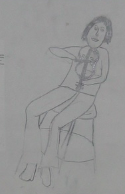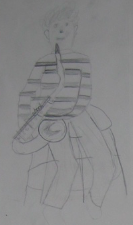Drawing
Inspiration for drawings come from many sources, memory, imagination and observation. Students explore a wide variety of drawing materials, including oil pastels, colored pencil and chalk pastels. Observation drawing helps students translating what they observe about a three-dimensional object into lines and shapes on a flat piece of paper. As students get older, they learn to incorporate surface textures and to vary line qualities. By fifth grade, most students begin to explore ways to represent three-dimensional space.
Kindergarten
Lines and shapes- to music
Students discuss line. An inventory of different kinds of lines are brainstormed by the class. We then use our magic air writers to create colorful lines in the air as we listen to clips of classical music. Students are asked to think about how the music "moves" and makes them feel. What different lines are represented? Magic air writers are collected and students create lines with oil pastels as they listen to the music. They then experience the "magic" of watercolor resist by painting over their lines and discovering that oil pastels block watercolor paints from reaching the paper.
Nocturnal Animals
- What animals come out at night?
- What parts does your animal have?
- What shapes will you make for the parts?
- What color is your animal?
- Where will your animal be?
- What colors will you use for the night sky?
Observation of Building Blocks
Students work collaboratively to create a building out of blocks. They are asked to identify and draw the shapes that make up their buildings.
- What shapes do you see?
- What shapes are on the bottom? On the top?
- What shapes are next to each other?
- Are they touching or is there space between them?
- How big is one shape compared to another?
- What kinds of details will you add to your building?
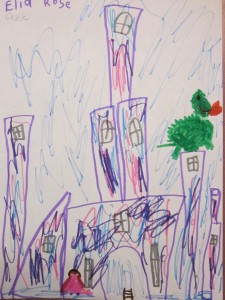
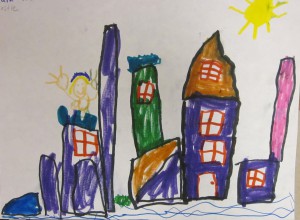
Observation- Bugs
- What shape is the bugs body?
- What shapes are inside the body?
- What parts come off the body?
- How many legs does your bug have?
- What direction do they point?
- What other details do you notice?
- What colors do you need?
- What kind of background will you make?
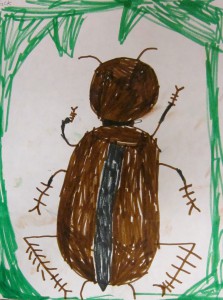
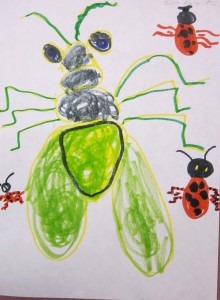
Mixed Up Chameleon
The class reads the Mixed Up Chameleon by Eric Carle.
- What kinds of animals will you use for each part?
- Does the animal have fur? Scales? or a rough outside?
- How can you show the different textures with the oil pastels?
- Where might your mixed up animal live?
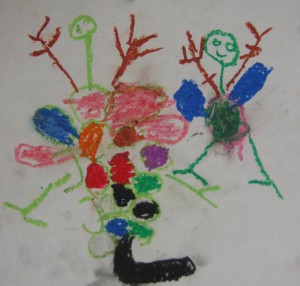
Self Portrait with Emotions
- What parts do we need for our face?
- How does our face change when we are happy? Angry? Sad?
- What kinds of things make us happy? Angry? Sad?



1st Grade
Matchbox Cars
- What big parts do you see?
- What shapes are they?
- What small parts do you see?
- Where do you see inside shapes?
- Where will your cars be traveling?
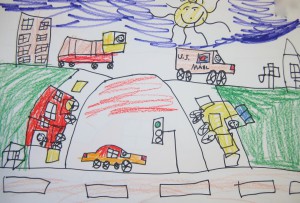
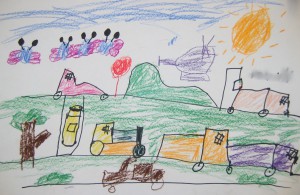
Cloudy Day (Science Integration)
What kinds of clouds have you studied?
- How can we use our oil pastels in different ways to show what these different clouds look like?
- Where might they be in the sky?
- What kind of place will you make?
- What color would the sky be?
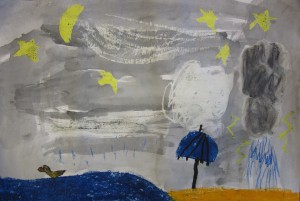
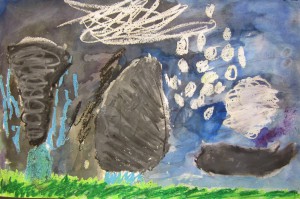
Observation- Dinosaurs
- What are the big shapes?
- What are the connecting shapes?
- What inside details do you see?
- How can you use your tools to make textures and inside shapes?
- Where might your dinosaur live?
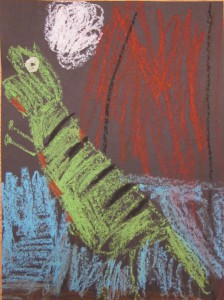
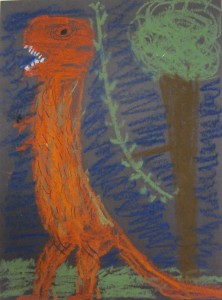
2nd Grade
Mannequins
- What shape makes the head?
- What shapes do you see in the arms? Legs? Body?
- What happend to the shape if you move the mannequin?
- What direction are they pointing?
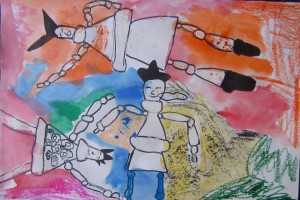
Oil Pastel Landscape
- What kind of place will you make?
- What kinds of textures will you make for different areas?
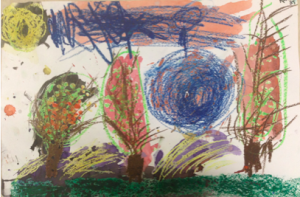
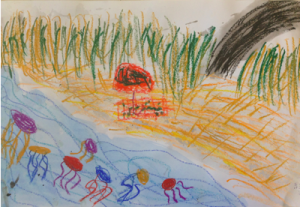
Under the Sea-Resist
Students are inspired by the National Geographic Society Real Wild Animals Series where they explore the Great Barrier Reef and all the fantastic underwater creatures.
- What kinds of creatures will you make for your under the sea picture?
- What kinds of plants might be there?
- Will their be any signs of humans?
- Where might you show overlapping?
- Where might you need picture?
- How can you show that the sea goes on forever?
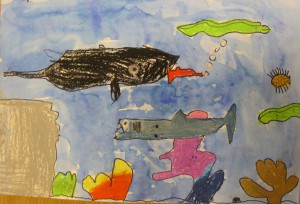
3rd Grade
Bike Observation
- What are the biggest parts? What shapes are they?
- What are the connecting parts?
- How much space is between the parts?
- How long is one part to another?
- Where do you see overlapping?
- What textures do you see and how will you make them?
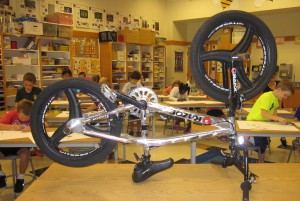
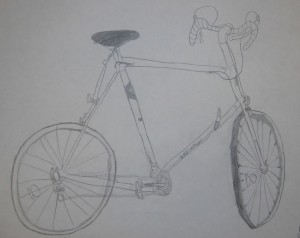
Underground
Students are asked to put on their x-ray eyes and imagine what might be happening underground. Using only a pencil students are challenged to think about how they will show the differences between different plains of space and texture. What are different ways they can use their pencil? At the end of class students share their ideas and reflect on an underground drawing by artist Saul Steinberg.
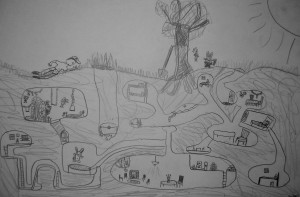
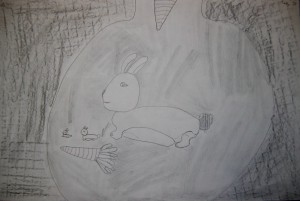
Shells
- What point of view will you use?
- What shape is the outside of the shell?
- What inside shapes are present?
- Are their patterns or textures on the shell?
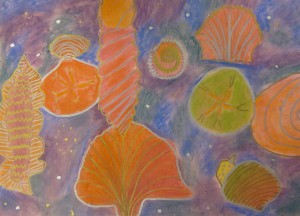
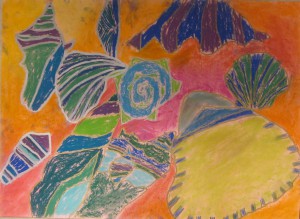
4th Grade
Shoe Observation
- What kind of curve happens at the sole of your shoe?
- How do the other lines relate to that first line?
- What inside shapes do you see?
- What textures will you make?
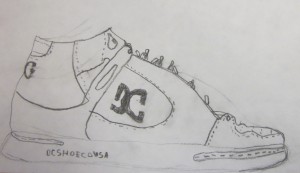
Instrument Observation
- What is the biggest shape?
- What shapes come off of the biggest shape?
- What shapes are inside other shapes?
- Where do you see overlapping?
- Is there any reflections?
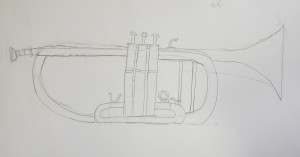
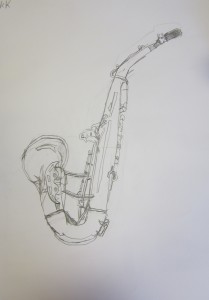
Observation of Forms
After students work with at creating their own forms they are challenged to try and represent them on a 2 D surface. They observe a still life of overlapping forms. They use highlights and shadows to help make the forms appear 3D.
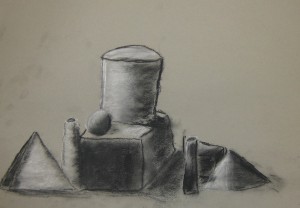
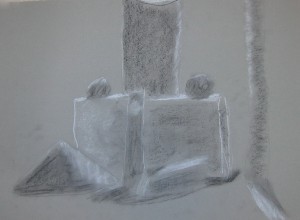
Figure Drawing with instruments
- What do you see from your point of view?
- How does the body bend?
- How does the instrument relate to the body in position and size?
- What other detail do you see?
